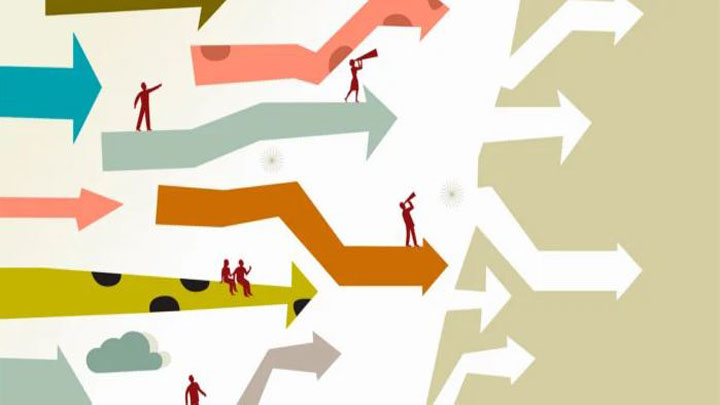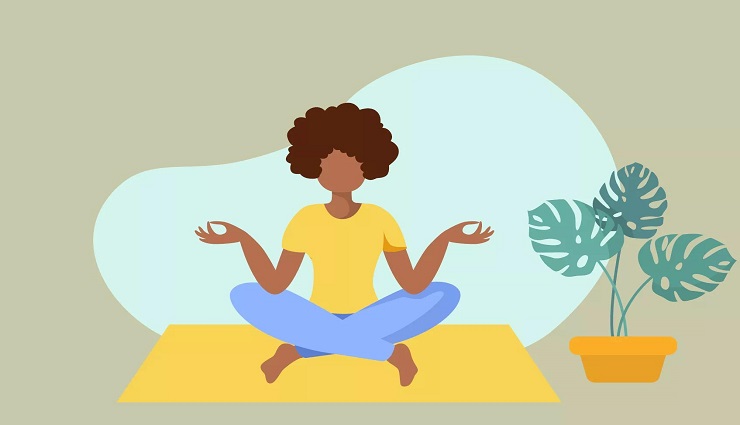Various theories have been proposed about human behavior in psychology. One of these theories, which has been used by many therapists for a long time and has found applications in fields other than psychology, is the Choice theory. Dr. William Glasser first proposed this theory in the 60s and then invented the reality therapy method to apply the idea. Since then, this theory has been used in psychotherapy and other areas, such as organizational leadership and education. In this article, after defining the idea and its principles, we talk about reality therapy and explain how this theory helps us make more appropriate choices in life.
Definition of choice theory
For the first time, Dr. William Glasser, a famous American psychologist, proposed the theory of choice in the 60s. This theory is based on the premise that humans only have control over their behavior. According to this theory, all human behaviors are our choices. The purpose of these behaviors is to fulfill five basic needs:
- To love and be loved;
- the power;
- freedom;
- entertainment;
- Survival.
According to choice theory, we all act to satisfy one or more of these five basic needs. Among these five needs, loving and being loved and power is more essential than others. According to Glasser, we need to be valuable in the eyes of ourselves and others; therefore, we seek to provide these two needs throughout our lives.
How to satisfy needs based on choice theory
The choice theory explains the method of satisfying our needs based on a concept called “behavior machine.” Our behaviors to meet these needs always consist of 4 elements:
- think;
- to act, to act upon, surgery;
- emotions ;
- Physiology.
These four elements are related to each other and affect each other. We only have mastery over the first two, thinking and action, and we can form a behavior based on them. But we have no control over the other two, namely emotions and physiological reactions (such as anxiety attacks ). Of course, with the help of our thoughts and actions, we can indirectly change feelings and physiological responses.
Ten principles of choice theory
The choice theory has ten principles that define specific facts about us and our behaviors. These ten principles are as follows:
- Humans only have control over their behavior.
- Everything we give or take from others is information.
- All psychological problems are a form of relationship problems.
- We all have at least one fulfilling relationship.
- The past influences who we are, but we are not prisoners.
- All our behaviors are to satisfy five basic needs.
- To meet these needs, we create a desirable mental world.
- All our behaviors are made up of 4 main elements.
- Realizing that we only have control over our behavior leads to our freedom.
- We only have direct control over our thoughts and actions, but we can also control our emotions and physiology with the help of these two.
What is meant by the ideal mental World in choice theory?
The quality world is a fake world that we have built in our minds based on what we consider reasonable and desirable. It can be viewed as a mental paradise. We place whatever we feel hot and seductive in this World.
Glasser believes that humans feel good by building this mental World and satisfying at least one of their essential needs. This mental World is unique for everyone and does not necessarily conform to society’s norms. In a word, the ideal mental World is our definition of a perfect life.
Is the real world similar to our ideal mental World?
This is not the case. The real World is different from the mental World. Between these two worlds, the World we understand (The perceived World) is located. According to choice theory, we perceive the World with our senses. We receive data from the surrounding environment and pass them through the filter of knowledge and then the filter of our value. These mental filters are formed based on all our experiences throughout life. When faced with new data, we first pass it through the filter of our knowledge and make one of the following three decisions about it:
- Ignore the data.
- Data is essential, but we need to know more about it.
- The data is meaningful and must pass the values filter.
In the third case, we send the desired data to the second filter and evaluate it. Again, three situations occur:
- Data is enjoyable and valuable and a desirable and positive value.
- Data is painful and useless and assessed as an unwanted and harmful value.
- The data is neither pleasurable nor painful and is somewhere between the first and second options, and we evaluate it as neutral.
According to Glasser, the data evaluation process is entirely personal. In other words, we humans each have unique filters. Therefore, each of us perceives the World differently. According to Glasser, our understanding of the World has these characteristics:
- Based on our education, experiences, gender, and age.
- It is unique. That is, no two people have the same perceived World.
- This perceived World is constantly changing because we are continually receiving new data.
- Our understanding of the World is probably inaccurate, although it seems accurate and true.
reality therapy; Application of choice theory

Reality therapy was created based on the teachings of choice theory. This therapy aims to help clients make wiser choices to meet their basic needs. Glasser did not believe in mental illness. He said that what we call mental illness is caused by unmet needs and unfulfilled goals in life. He thought that mental illnesses manifest dissatisfaction caused by not meeting requirements.
Reality therapy focuses on “paying attention to the present.” As the fifth principle says, although the past influences us, we are not its prisoners. Therefore, regardless of whether our needs were not met in the past, the therapist in this method teaches the client to live in the present and decide to act now and in the future to meet them without harming themselves or others.
The relationship between the therapist and clients in reality therapy
Another critical point of this method is emphasizing the therapist’s relationship with clients. The client’s relationship with the therapist is believed to be a model of the client’s relationship with others. Since Glasser thought that relationship problems cause psychological problems, the therapist should be able to identify the client’s relationship model and try to fix its defects. It is up to the therapist to guide the client to make the most appropriate decisions in their relationship.
Reality therapy and problem-solving
In general, it should be said that reality therapy is a problem-solving method. The client should understand that his current behaviors are ineffective and try to change their behaviors. This treatment method will be successful when the clients understand the first principle and accept responsibility for their behavior. Now he can change his behavior based on this understanding. To understand which behaviors should be changed, choice theory divides human behaviors into two general categories:
- Constructive behaviors: supporting, encouraging, listening, accepting, trusting, respecting, and negotiating differences.
- Non-constructive behaviors: criticizing, blaming, complaining, grumbling, threatening, punishing, and bribing to control another.
These two categories, each containing seven behaviors, determine the success or failure of our relationships. The work of reality therapy, especially in interpersonal relationships, is to transform non-constructive and toxic behaviors for the connection into constructive and valuable behaviors.
Reality therapy has been used since 50 years ago in various fields such as addiction recovery, academic problems, and improvement of interpersonal relationships.
Other applications of choice theory
In addition to psychology, this theory is also used in fields such as leadership and education.
1. Management and leadership
In business, many managers use external control methods such as fear, criticism, and rewards to control and motivate employees. Choice theory suggests another technique. This theory teaches leaders to focus on increasing employee accountability instead of external control. They can motivate employees to perform better by creating a constructive relationship through negotiation and dialogue and emphasizing meeting the basic needs of employees.
Using the Choice theory’s teachings, leadership seeks to create a two-way relationship based on meeting the parties’ needs.
2. Education
Instead of using mechanisms such as encouragement and punishment, teachers can use the principles of choice theory to create a satisfying relationship with students that meets their needs. With the help of these teachings, students can be made aware of the role of their behavior and increase their responsibility. Students must understand that others are not to blame for their academic problems. So instead of paying attention to the past, they focus on the present and what they can do to improve the situation and modify their behavior to achieve their goals.
Choice theory book; The result of Glasser’s lifetime
In 1998, William Glasser published the result of years of development and application of his theory in a book entitled “Choice Theory; he wrote the new psychology of individual freedom. This book has been published in our country under the title ” Choice Theory ” and has been reprinted many times. We recommend that you read this book if you want to get acquainted with reality therapy and the experiences of this famous and influential psychologist.
Common questions
1. What is Choice theory, and what does it say?
Choice theory is a theory about behavior and states that all humans have control over their behavior and choose it to satisfy their basic needs. This theory says that all the decisions we make in life are to meet basic needs, including love, power, fun, freedom, and survival.
2. Who proposed the theory of choice?
William Glasser, a famous American psychologist, proposed this theory.
3. What are the principles of choice theory?
Glasser’s Choice theory is based on ten principles. These ten principles determine how people choose and behave. For example, it has been said in the first principle that humans only have control over their behavior. To read other tenets of this theory, refer to the explanations given in the article.
4. What is the difference between the mental World and the perceived World?
In the Choice theory, we talk about two worlds. First is the ideal mental World, our ideal image of life. Second, the perceived World, which is the result of our understanding of the World. The choice theory seeks to reduce the distance between these two worlds with the help of reality therapy.
5. What is the application of choice theory?
The teachings of choice theory have led to the creation of a therapeutic method called reality therapy. Therapists use choice theory to solve personal problems such as addiction and relationship problems. In this method, the goal is to make the person responsible by teaching him the ten principles of the theory.
Warning! This article is only for educational purposes; to use it, it is necessary to consult a doctor or specialist.



